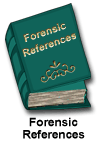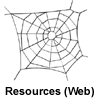|
|
 |
Unit.E.5.4.
Senior Abuse/ Neglect
The
required readings for this unit are:
 Australia
Australia |
Required
Reading(s)
|
 |
Insert article here
 Canada
Canada |
Required
Reading(s)
|
 |
Insert article here
 International
International |
Required
Reading(s)
|
 |
Insert article here
 United Kingdom
United Kingdom |
Required
Reading(s)
|
 |
Insert article here
 United States
United States |
Required
Reading(s)
|
 |
| Heisler,
C. J. (2000). Elder Abuse and the Criminal |
Justice
System: New Awareness, New Responses. Generations,
24(2), 52-58. Retrieved December 26, 2002, from
Academic Search Premier Database: http://search.epnet.com/direct.asp?an=3539868&db=aph
- Note:
The last decade has seen a significant change in
the awareness of elder abuse as a crime due at least
in part to new information on the forms and consequences
of elder abuse, profiles of perpetrators, and the
relationship to domestic and family violence. In
serious cases, only the criminal justice system
may be capable of stopping the abuse.
|
| White, S.
(2000). Elder abuse: Critical care nurse role in |
detection.
Critical Care Nursing Quarterly; 23(2), 20-25.
Retrieved December 26, 2002, from Academic Search
Premier Database: http://search.epnet.com/direct.asp?an=6777999&db=aph
- Note:
This article focuses on the issues and concerns
of elder abuse and the role of the nurse
in identification and management of the problem.
Definition of elder abuse; Types of abuse;
Signs of physical abuse; Steps in the nursing
process.
|
Databases
For the full text article online,
sleuth the 'University
of Calgary/ Library/ Article Indexes':
Directions:
- Select
- Indexes and abstracts with links to full text articles
- Select
- Academic Search Premier or Expanded Academic ASAP
- Select
- Connect
-
Fill in
User ID and Pin
- Fill
in search words:
abuse and senior
Top of Page
|
 |
 |
Unit.E.5.4.
Senior Abuse/ Neglect
The
'recommended only' readings for this unit are the following:
 Australia
Australia |
Recommended
Reading(s)
|
 |
Insert article/book/chapter here
 Canada
Canada |
Recommended
Reading(s)
|
 |
| Vida, S.,
Monks, R. C., & Des Rosiers, P. (2002). |
Prevalence
and correlates of elder abuse and neglect in a geriatric
psychiatry service. Canadian Journal of Psychiatry,
47(5), 459- 467. Retrieved December 26, 2002,
from Academic Search Premier Database:
http://search.epnet.com/direct.asp?an=6854005&db=aph
- Investigates
the prevalence of elder abuse and neglect
in a geriatric psychiatry service. Types of abuse
and neglect; Correlates of elder abuse; Implications
for the practices of geriatric psychiatry service.
INSETS: Table 1 Description of sample; Table 2 Prevalence
of elder abuse and neglect; Table 3 Bivariate association
of abuse or neglect with nominal; Table 4
Multivariate logistic regression final model.
|
 International
International |
Recommended
Reading(s)
|
 |
Insert article/book/chapter here
 United Kingdom
United Kingdom |
Recommended
Reading(s)
|
 |
| Dyer, C.,
& Rowe, J. (1999). Elder abuse. Trauma, |
1(2),
163-169. Retrieved December 26, 2002, from Academic
Search Premier Database:
http://search.epnet.com/direct.asp?an=4160753&db=aph
- Focuses
on the prevalence of elder abuse in Great Britain.
Accounts on physical, psychological and sexual elder
abuse; Correlation between degree of physical disability
and subsequent physical abuse; Services provided
by accident and emergency departments to abused
elders.
|
 United States
United States |
Recommended
Reading(s)
|
 |
| Anetzberger,
G. J. (2000). Caregiving: Primary cause |
of elder
abuse? Generations, 24(2), 46-51.
Retrieved December 26, 2002, from Academic Search
Premier Database:
http://search.epnet.com/direct.asp?an=3539867&db=aph
- Note:
Regarding elder abuse as a by-product of caregiver
stress and burden served to justify adult protective
services as the primary professional intervention
for addressing the problem. Unfortunately, the reality
of elder abuse demands that new explanatory and
intervention models be developed.
|
| Marshall,
C. E., Benton, D., & Brazier, J. M. (2000). |
Elder
abuse. Geriatrics, 55(2), 42-48.
Retrieved December 26, 2002, from Academic Search
Premier Database:
http://search.epnet.com/direct.asp?an=2822676&db=aph
- Describes
the common types of elder abuse and provides
recommendations for using the tools of the clinical
setting to identify abuse. Causes of elder abuse;
Key to gathering clues suggestive of abuse;
What a physical examination may provide; Intervention
issues.
|
| Moon, A.
(2000). Perceptions of elder abuse among |
various
cultural groups: Similarities and differences. Generations,
24(2), 75-81. Retrieved December 26, 2002, from
Academic Search Premier Database: http://search.epnet.com/direct.asp?an=3539877&db=aph
- Note:
Variations in research methodology, small sample
size and nonprobability sampling methods used in
most elder abuse studies
limit the ability of researchers to make generalizations
based on the available findings. Given these limitations,
Moon attempts to examine the similarities and differences
in perceptions of elder abuse
among several cultural groups that have been studied.
|
|
Payne,
B. K., Berg, B. L., & James, L. D. F. (2001).
|
Attitudes
about sanctioning elder abuse offenders among police
chiefs, nursing home employees, and students.
International Journal of Offender Therapy and Comparative
Criminology, 45(3), 363-382. Retrieved September
22, 2002 from the Proquest database
- Note:
Payne et al examined the way that four groups perceive
the sanctioning of offenses committed against elderly
persons: police chiefs, nursing home administrators,
nursing home staff, and students enrolled in sociology
and criminal justice courses. By conceptualizing
the perceptions of abuse among these four groups,
steps can be taken toward either preventing or responding
to crimes against elderly persons.
|
| Swagerty
Jr., D L. (1999). Elder Mistreatment. |
American
Family Physician, 59(10), 2804- 2808. Retrieved
December 26, 2002, from Academic Search Premier
Database: http://search.epnet.com/direct.asp?an=1897619&db=aph
- Focuses
on the issues regarding elder mistreatment. Definitions
and classifications of elder mistreatment; Risk
factors and prevention; Legal issues on elder mistreatment.
|
| Wolf, R.
S. (2000). The nature and scope of elder abuse. |
Generations,
24(2),
6-12.
Retrieved December 26, 2002, from Academic Search
Premier Database:
http://search.epnet.com/direct.asp?an=3539244&db=aph
- Note:
The multifaceted nature of elder-abuse cases, which
involve physical, psychological, social, legal,
ethical, and environmental matters, requires that
action take place on the psychological, social and
legal levels and that it involve multiple systems.
Wolf presents a brief overview of the nature, scope,
and consequences of elder abuse
|
Top of Page
|

|
Additional
references for this unit can be found in 'forensic
references'
of the forensic sourcebooks.
forensic
- senior(elder) abuse/neglect
Top of Page
|

|
Video's
recommended for this unit are:
|
|
Resources
(Video)
|
 |
Video
-Senior Abuse - Breaking the Silence
CA-Flag
Canada
Information
only
Queensway Carleton Hospital (1996). [Video] |
Breaking
the Silence (Senior Abuse) [17 min.] Produced
by Queensway Carleton Hospital: Nepean, Ontario.
|
Top of Page
|

|
 |
Unit.E.5.4.
Senior Abuse/ Neglect
The
required websites to sleuth for this unit are the following:
 Australia
Australia |
Resources
(Web)
|
 |
 Canada
Canada |
Resources
(Web)
|
 |
| Barnaiecki,
E. (1997). (1997). Protection for Persons in |
Care
Act. Alberta Government. Edmonton, AB. Retrieved
July 21, 2002, from http://www.health,gov.ab.ca/public/documents/protback.htm
|
| Health and
Welfare, Canada. (1990). Retrieved from |
Health
and Welfare, Canada. (1990). Retrieved from Aug
24, 2002, from
www.hc-sc.gc.ca/hppb/familyviolence/html/neglect/english
|
| Office for
the Prevention of Family Violence, Alberta |
Social
Services, 1994. Retrieved July 23, 2002, from http://www.n-w.com/cgi-bin/nweb.
|
| Statistics
Canada, National Clearinghouse on Family |
Violence:
Abuse of older Adults. Retrieved
August 24, 2002, from http://www.lib.sfu.ca/kiosk/nsmart/gero.htm
|
| Swanson,
S. (2000). Abuse and neglect of older |
adults:
A discussion paper. Retrieved July 23,
2002, from http://www.hc_sc.gc.ca/hppb/familyviolence/html/elderaben.html.
|
 International
International |
Resources
(Web)
|
 |
 United Kingdom
United Kingdom |
Resources
(Web)
|
 |
Insert website here
 United States
United States
|
Resources
(Web)
|
 |
Top of Page
|
 |
For
additional websites on this unit, sleuth 'forensic
websites' in the forensic sourcebooks.
For Database
on Elder Abuse Websites link to Forensic Websites in Forensic
Sourcebooks
http://www.forensiceducation.com/sourcebooks/experts/Experts_database.html/websites
Elder Abuse
Websites
Top of Page
|
 |
|